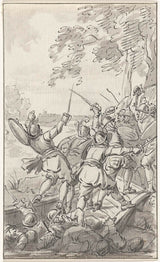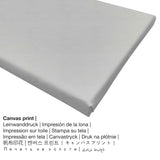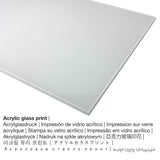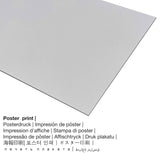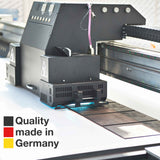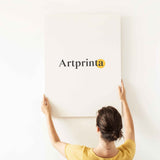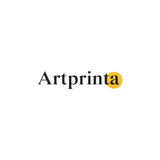Jacobus Zụrụ, 1785 - Arent Jan Benschop na mmiri iri na Renesse - ọmarịcha nka.
Ụtụ gụnyere. Mbupu gbakọrọ na ndenye ọpụpụ.
Kedu ụdị akwụkwọ nka nka ka m nwere ike iburu?
Anyị na-enye ihe dị iche iche dị iche iche na nha maka ngwaahịa ọ bụla. Nhọrọ ndị a dị maka n'otu n'otu:
- Ihe odide acrylic glass: An acrylic glass print, often described as a an art print on plexiglass, will transform the original artwork into beautiful home décor. Beyond that, it offers a good alternative to dibond and canvas art prints. Your own version of the work of art is manufactured with modern UV print machines. With an acrylic glass art print contrasts plus minor color details will be recognizeable thanks to the very fine tonal gradation. The acrylic glass protects your selected fine art print against light and external influences for decades.
- Mpempe akwụkwọ (ihe kwaaji): Our poster print is a printed flat canvas paper with a nice structure on the surface, that reminds the original version of the masterpiece. A print poster is optimally qualified for putting your fine art print using a customized frame. Please keep in mind, that depending on the absolute size of the poster we add a white margin of approximately 2-6cm around the work of art, which facilitates the framing with your custom frame.
- Aluminom ihe eji eme ihe: These are metal prints on aluminium dibond material with a true depth, which makes a contemporary impression throuch a non-reflective surface. The colors of the print are vivid and luminous, details of the print are very clear. This direct print on Aluminum Dibond is the most popular entry-level product and is a truly contemporary way to showcase art, as it puts 100% of the viewer’s focus on the image.
- Kwaaji: The canvas print is a printed cotton canvas stretched on a wooden stretcher. Canvas Prints have the advantage of being low in weight, which implies that it is quite simple to hang up your Canvas print without the help of extra wall-mounts. Canvas prints are suitable for any kind of wall.
Nkwupụta iwu: We try everythig possible in order to describe the products as exact as possible and to display them visually. However, the tone of the print materials, as well as the imprint can vary to a certain extent from the presentation on your monitor. Depending on your screen settings and the nature of the surface, colors can unfortunately not be printed one hundret percent realistically. Given that all fine art prints are processed and printed by hand, there might as well be minor deviations in the exact position and the size of the motif.
Ozi izizi gbasara ihe osise sitere na ụlọ ngosi nka (© nwebiisinka - Rijksmuseum - Rijksmuseum)
Arent van Benschop, Jan van Renesse and their troops drowned in the Lek in Beusichem, after the defeat of the Flemings in Zierikzee, August 16 1304. Design for a picture.
Ihe osise narị afọ nke 18 a Arent Jan Benschop and drowning in Renesse was painted by the rococo artist Jacobus Buys in the year 1785. Ọzọkwa, ihe osise a bụ akụkụ nke Rijksmuseum's digital collection in Amsterdam, Netherlands. The kpochapụwo nka ngalaba ọha A na-etinye ihe osise na nkwanye ùgwù nke Rijksmuseum.Ebe E Si Nweta nke ihe osise:. E wezụga nke a, nhazi ahụ bụ Eserese na a akụkụ ruru nke 9: 16, nke pụtara na ogologo bụ 45% mkpụmkpụ karịa obosara. Jacobus Buys was a painter, whose art style can be attributed primarily to Rococo. The Rococo painter was born in the year 1724 na Amsterdam, North Holland, Netherlands na nwụrụ anwụ na afọ nke 77 n'afọ 1801.
Ozi ndabere na nka
| Aha nka: | "Arent Jan Benschop and drowning in Renesse" |
| Nhazi nka: | sere |
| Okwu nche anwụ: | nka ochie |
| Nhazi oge: | 18th narị afọ |
| Afọ okike: | 1785 |
| Afọ nka: | 230 afọ |
| Egosiputara na: | Rijksmuseum |
| Ebe ngosi nka: | Amsterdam, Netherlands |
| Ebe nrụọrụ weebụ ihe ngosi nka: | Rijksmuseum |
| License: | ngalaba ọha |
| Site n'aka: | Rijksmuseum |
Ozi ederede
| Nkewa edemede: | nka nka |
| Mmeputakwa: | dijitalụ mmeputakwa |
| Production usoro: | UV kpọmkwem obibi |
| Mmalite nke ngwaahịa a: | German mere |
| Stockdị ngwaahịa: | mmepụta ihe na-achọ |
| Ojiji ngwaahịa: | nka mgbidi, mma mgbidi |
| Ndepụta: | usoro eserese |
| Oke akụkụ: | (ogologo: obosara) 9: 16 |
| Akụkụ akụkụ pụtara: | ogologo bụ 45% mkpụmkpụ karịa obosara |
| Nhọrọ ihe onwunwe: | Mbipụta kwaaji, mbipụta ọla (aluminium dibond), mbipụta enyo acrylic (nwere ezigbo mkpuchi iko), mbipụta akwụkwọ mmado (akwụkwọ kwaaji) |
| Nha n'arọwa n'elu ihe ndọtị (mbipụta akwa akwa): | 50x90cm - 20x35" |
| Acrylic glass print (nwere ezigbo mkpuchi iko) nhọrọ: | 50x90cm - 20x35" |
| Ụdị akwụkwọ mmado (akwụkwọ kwaaji) dị iche iche: | 50x90cm - 20x35" |
| Nhọrọ ebipụta aluminom: | 50x90cm - 20x35" |
| Igwe onyonyo: | biko buru n'uche na edeghi akwukwo nka nka |
Tebụl nchịkọta ihe nkiri
| Ihe nkiri: | Jacobus zụrụ |
| Aha nka ndị ọzọ: | Buys Jacobus, Jacobus Buys, J. Buys, Buijs Jacobus, B[uys], J. Buis, Buys Jacob, Jacob Buys, Buys |
| okike nke onye nka: | nwoke |
| Obodo onye nka: | Dutch |
| Ọrụ: | onye na-ese ihe |
| Mba onye si: | mba netherland |
| Nhazi nke onye nka: | nna ukwu ochie |
| Ụdị nka: | Rococo |
| Akwụsị: | 77 afọ |
| Afọ ọmụmụ: | 1724 |
| Ebe amụrụ onye: | Amsterdam, North Holland, Netherlands |
| Afọ ọnwụ: | 1801 |
| Nwụrụ na (ebe): | Amsterdam, North Holland, Netherlands |
© Nchekwa ikike nwebisiinka | Artprinta.com

